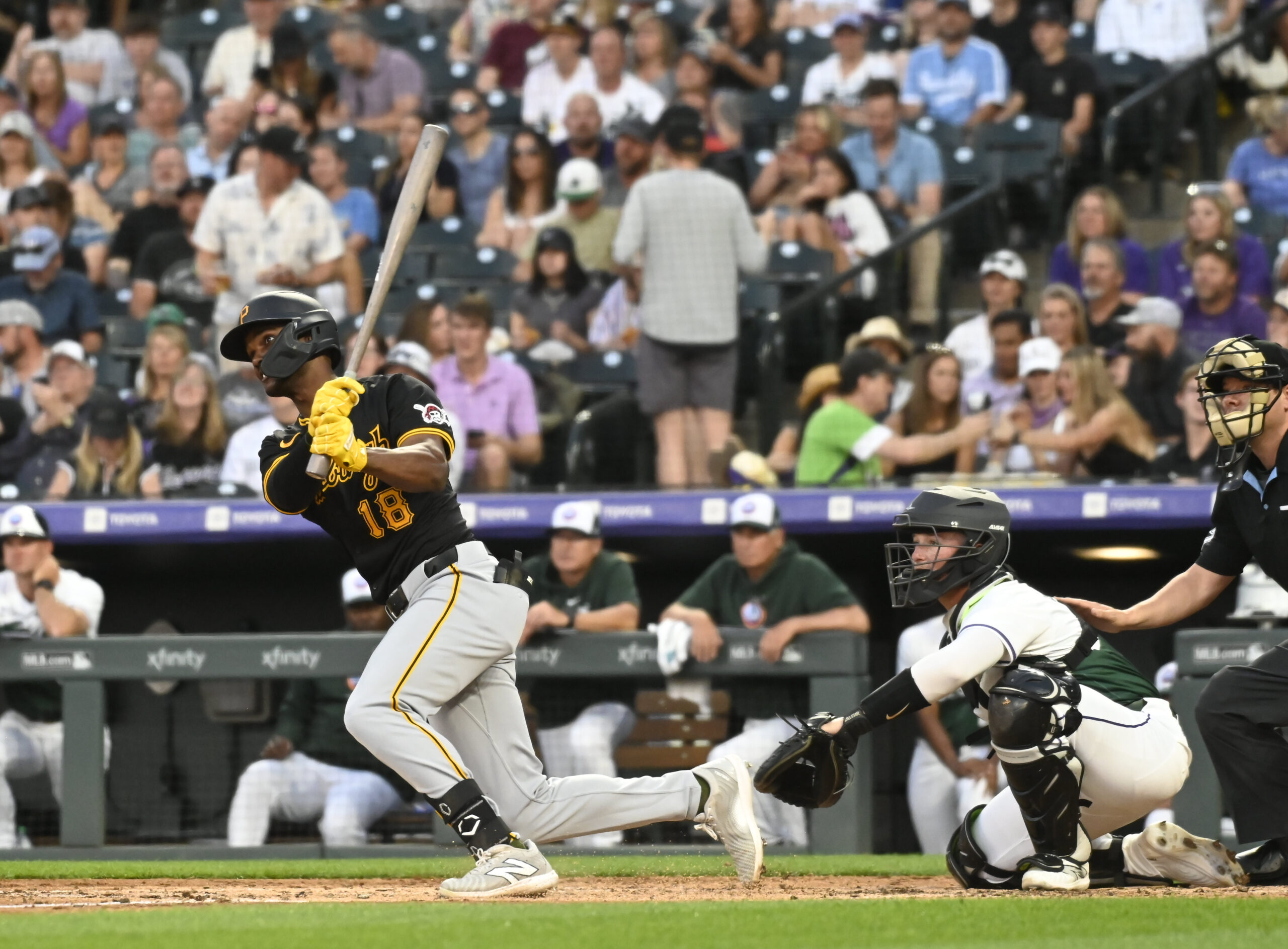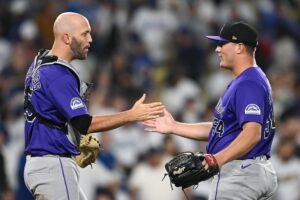Michael A. Taylor is one player who can deliver as the Pittsburgh Pirates look to the current roster for improvement. That won’t be a popular opinion among Pirates fans who can’t get Taylor out of town fast enough. However, general manager Ben Cherington said recently that the Pirates feel that “internal improvement” from the current roster will help the team better than a trade would. While it’s easy to punch holes in that argument, it looks like that’s how Cherington will operate. Thus, let’s ponder where that improvement can come from. It’s not so far-fetched that it can come from the veteran center fielder Taylor. All he has to do is change the batting style he’s stubbornly adhered to.
Pirates Veteran Needs To Change Offensive Approach
This is not necessarily an indictment of Taylor. He’s made over $25 million in 11 major league seasons doing things one way. If teams are willing to pay for what he brings to the table, he’ll keep bringing that to the table until told otherwise. Unfortunately, he’s underusing one of his talents, i.e., speed. That’s preventing Taylor from giving the Pirates the “internal improvement” they need.
Of the proverbial “five tools,” speed is the only one used on offense and defense. Taylor has made good use of it on defense. He won a Gold Glove Award as a member of the Kansas City Royals in 2021 for his work in center field. He’s been a plus defender over his career. Eliminating a couple of emergency appearances in the infield and on the mound, he’s been worth 61 Fielding Runs Above Average and 83 Defensive Runs Saved as an outfielder.
On offense, it’s a different story. Taylor is a good hitter – when he’s not striking out. Entering Tuesday’s action in 2024, his BABIP is .293, below his career mark of .317, but not alarmingly so. His 37.9 hard-hit percentage and 21.2 line drive percentage aren’t far off major league average. The problem is that he doesn’t put enough balls in play. His strikeout rate of 34.1 percent is unacceptable for a player with his speed who can’t be properly called a power hitter.
Taylor Can Be Source Of Improvement For Pirates
Taylor is part of a group of rotating outfielders who, except for Bryan Reynolds, have been disappointing so far. The speedy veteran is hitting .191/.244/.248, 1 HR, 11 RBI, and an OPS+ of 42. He’s stolen just six bases in seven tries. Last year with the Minnesota Twins, Taylor hit 21 home runs. That’s the player the Pirates thought they were getting when they gave him $4 million. Unfortunately, they made the same mistake many teams make in the pursuit of free agents. The Pirates evaluated Taylor based on a career year rather than his entire career, which is a better indication of how a player will perform.
Taylor has reached double figures in home runs only four times in his 11-year career. The last time he approached last year’s 21 home runs was in 2017, when he hit 19. He’s a lifetime .236 hitter who’s struck out 30.1 percent of the time for his whole career. His career OPS+ is an unsatisfactory 81. The only season when it exceeded 100 was also in 2017, when that figure was 104. His career stolen base success rate is 78 percent. Unfortunately, he’s not on base often enough to take advantage of that skill. He’s reached double figures in steals just six times in his career and just twice in the last six years. His career high in stolen bases was 24 in 2018.
The Answer
Yet, time and again, we see Taylor come up to bat and take home run swings at the ball as though he were a power hitter, more often than not resulting in a strikeout or a harmless fly ball that comes to rest in an outfielder’s glove. It’s odd that no hitting coach, including Andy Haines of the Pirates, has asked Taylor to shorten his swing, with the resulting improvement coming from fewer strikeouts and, thus, more balls in play, more times on base, and more stolen bases. In today’s baseball, a two-strike approach is seldom seen, but it’s something Taylor should be employing regardless of the count. He could then add a stolen base element that the Pirates have been sorely lacking.
The Last Word
Then again, it could be that Taylor is simply not a good hitter. In any case, it’s time that he tries something different and hopefully becomes more of an offensive threat. Otherwise, he may not be on a major league team come the trade deadline, regardless of Cherington’s feelings about patience.
Main Photo Credits: John Leyba-USA TODAY Sports






